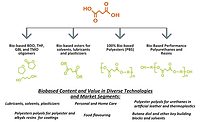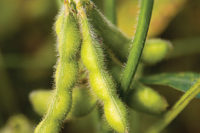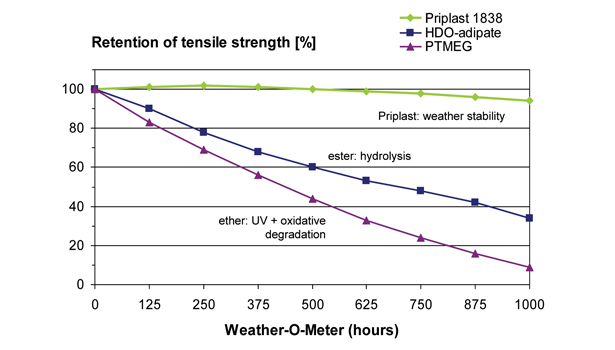Advancing Adhesives: Bio-Based Polyols for High-Performance Polyurethane Adhesives
Bio-based adhesive solutions can promote moisture protection and flexibility in a variety of applications.
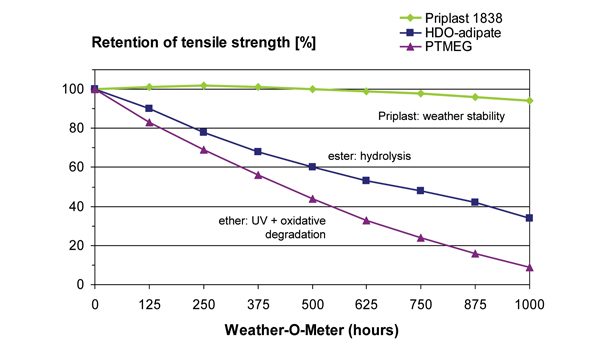
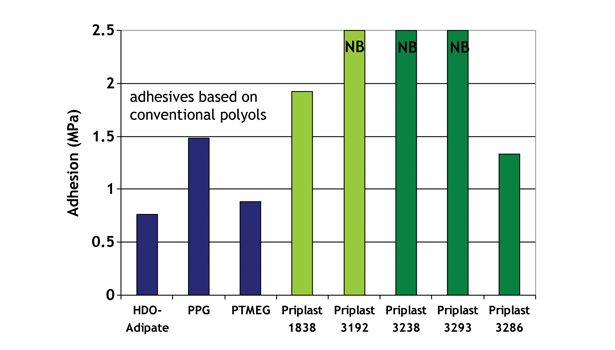
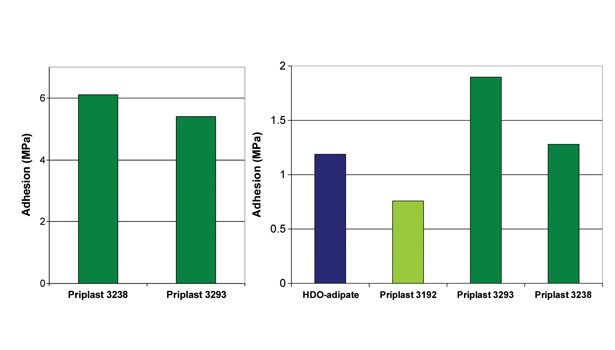
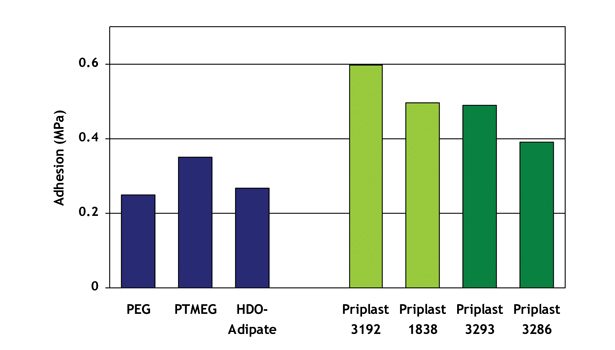
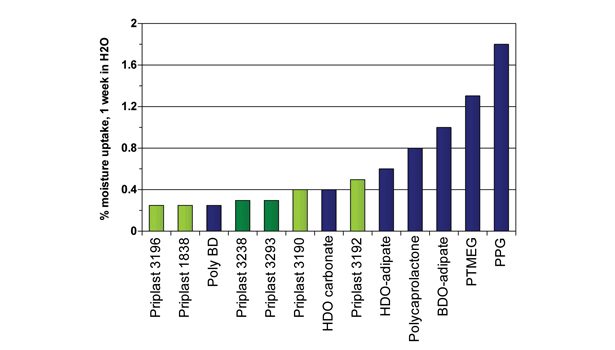
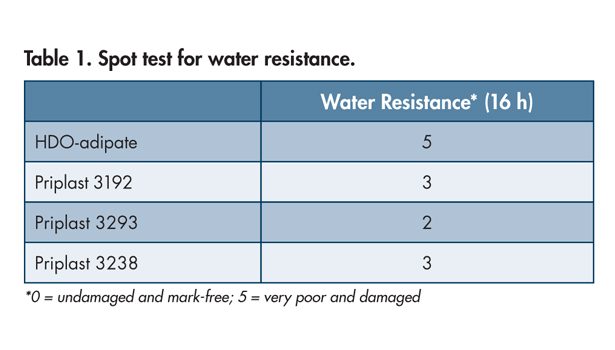






The world’s growing population and wealth, combined with raw materials scarcity, influence the adhesives market. Manufacturers are searching for bio-based solutions in order to reduce reliability on scarce raw materials and improve the carbon footprint of their products. At the same time, there is a demand for products with improved performance, extended lifetimes and a wider range of applications.
Adhesion of new and dissimilar substrates (e.g., composites and plastics) must be addressed when traditional bonding is replaced or when bonding surfaces become too small for non-adhesive joining. For example, adhesives can facilitate lightweight design in areas such as transportation and electronics, enabling fuel efficiency and material conservation. Croda’s range of bio-based Priplast™ polyols brings superior moisture protection and weather resistance for outdoor applications, and offers excellent flexibility and versatile adhesion in demanding applications. By extending the lifetime of products, a higher level of sustainability is achieved.
Properties and Technology
Priplast polyester polyols are based on C36 dimer acid from natural oils, giving these products highly renewable contents. To meet the industry need for sustainable and bio-based materials, Croda has developed a new portfolio of 100% bio-based Priplast polyol building blocks. The branched, non-crystalline, dimer acid structure offers low-temperature flexibility to the adhesive, prevents strain-induced crystallization and enhances wetting properties, while the hydrocarbon character imparts water repellency and affinity for a wide range of substrates. Priplast polyols also provide a combination of enhanced hydrolytic and thermo-oxidative stability, which is highly relevant for demanding applications such as transportation, electronic adhesives, or renewable energy systems.
Priplast polyols are based on dimerized fatty acids obtained by the reaction of unsaturated fatty acids. Starting from the C18 fatty acids that typically occur in nature, the dimer acid produced is a C36 di-functional product. Dimer acid is well-known as a high carbon building block used in many resins and applications. The hydrocarbon non-crystalline nature makes dimer acid—and polymers in which it is included—extremely hydrophobic, and provides low-temperature flexibility, lubricity and flow (or wetting), as well as an affinity for a wide range of substrates.
Priplast technology fits well with the industry trend toward bio-based materials. Due to the nature of the chemistry, the technology can be either amorphous or semi-crystalline; it can also vary in functionality and molecular weight. In this way, the technology can be readily incorporated into several polymer systems, such as polyesters, copolyester and copolyamide elastomers; and polyurethane (PU) dispersions (PUDs), coatings, adhesives, sealants, and elastomers.
The benefits brought by the incorporation of dimer acid remain with the bio-based polyols. Properties such as flexibility, hydrophobicity and versatile adhesion make them well-suited for adhesive applications. In PU adhesives, these polyols are best-suited for moisture-curing adhesives, thermoplastic hot melts and PUDs.
The new bio-based Priplast polyols have been developed with 100% renewable carbon content (ASTM D6866). Priplast polyester polyols are already highly renewable, and the 100% bio-based Priplast grades are an extension of the range. These products can help meet the positive environmental image of sportswear and consumer electronics, along with the renewability and lightweight targets in the transportation industry.
Priplast 3238 is a fully amorphous, di-functional polyol created especially for reactive PU applications. Priplast 3293 is a semi-crystalline type for higher modulus and strength reactive PU adhesives and is well-suited for PUDs. Priplast 3286 is amorphous with a higher functionality for crosslinked 2K systems. Further grades are under development. These 100% bio-based Priplast grades result as well in PU adhesives with good durability. Moisture repellency and flexibilities are obtained with a rubber-like behavior that lacks strain-hardening.
Experimental
For this project, moisture-curing reactive PU adhesives and PU dispersions for adhesives were made. For the reactive PU, a base comparison was made between Priplast bio-based polyols and conventional polyols such as hexane diol adipate (HDO-adipate), and polyether polyols such as poly(tetramethylene-ether)glycol (PTMEG or polyTHF). These adhesives were prepared from the respective polyols of 2000 molecular weight with solid MDI by reacting at 80°C to 15% NCO content.
Preparing aqueous dispersions from hydrophobic polyols like the dimer-based polyols can be challenging. The PU dispersions for this study were prepared via the so-called acetone process, to obtain waterborne PU dispersions with 35-40% solids contents. As an exception, semi-crystalline Priplast 3293 was reacted via the pre-polymer process. By incorporating dimethyl propionic acid (DMPA), the polymer is made water dispersible. After polymerization, the carboxyl groups of DMPA were neutralized with a tertiary amine. PU dispersions were prepared with isophorone diisocyanate (IPDI), where the ratio of hydroxyl and isocyanate groups gave a high-molecular-weight polymer with residual hydroxyl functionality. This allows for crosslinking at a later stage with a water-dispersible isocyanate (Desmodur DN, Bayer), although the Priplast-based PUDs were mainly used as such because they were found to give strong adhesion already without crosslinking.
Polyurethane adhesives are derived from polyols and isocyanates, which offer a very versatile technology. Typical polyols are polyether (such as PTMEG) or polyester (such as adipate esters). Properties are highly dependent on the nature of the polyol used. PU adhesives can be 1K moisture-curing reactive PU, PU dispersions, or thermoplastic (TPU), which requires good di-functionality of the polyol. They can also be crosslinked thermoset materials, such as 2K PU systems.
Conventional technology does have some shortcomings: polyether PU is susceptible to degradation by UV or thermo-oxidation, and polyester-based PU is susceptible to hydrolysis. The dimer fatty-acid-based polyester polyols, however, offer the key benefits of resistance to hydrolytic attack (by moisture, alkali or acid) and resistance to radical-type attack (via heat, oxygen, UV or chlorine), thus providing a unique combination of thermo-oxidative and hydrolysis resistance. Figure 1 illustrates results of an accelerated weathering test using heat, moisture and UV cycles.
Next to enhanced durability, the flexible nature of the Priplast dimer fatty acid technology results in excellent flow properties and efficient substrate wetting, leading to good adhesion properties to various substrates (see Figures 2 and 3). The hydrophobic nature improves adhesion to low-polarity substrates, as demonstrated for polyethylene in Figure 4.
In addition, the flexible nature results in low-temperature flexibility with good impact strength, resistance to flex fatigue and consistent hardness. Due to the lack of crystallization, Priplast-based materials behave much like rubber. The lack of strain-induced crystallization allows multiple flexing without alteration of mechanical properties.
The large hydrocarbon C36 nature of dimer technology in Priplast results in hydrophobic adhesives (see Figure 5). Hydrophobicity brings moisture repellency, good electrical resistivity, adhesion to low-energy surfaces and compatibilization of polar and non-polar materials. When soaked in water, Priplast-based adhesives absorb an order of magnitude less water than conventional polyether-based adhesives.
Polyurethane dispersion adhesives tend to be sensitive to water because of their water-dispersible nature. Water resistance can be increased through crosslinking the -OH functional PUD with isocyanate. The resistance of PUD films to water was tested in a spot test, leaving a water spot for 16 hours and evaluating eventual damage. Damage is scored from undamaged and mark-free (0) to very poor and damaged (5), as shown in Table 1.
An un-crosslinked film based on hexane diol adipate shows a very poor water resistance; the film is severely damaged after only one hour of exposure to water. Crosslinking the PUD by addition of 5% NCO increases the water resistance of the hexane diol adipate films to such an extent that the film is not damaged, but a clear mark can be seen after 16 hours (valued 3-4). Introduction of Priplast into a PUD significantly improves the water resistance, scoring better than the crosslinked HDO-adipate based films. The hydrophobicity of the bio-based polyol slows down migration of water into the film, which prevents damage, although a mark can be seen after exposure to water for 16 hours. The addition of 5% NCO crosslinker makes even the Priplast 3192-based films water resistant; the spot where the water was applied could hardly be distinguished.
Conclusion
Priplast technology can be used to create high-performance adhesives—either moisture curing, hot melt or PUD. Priplast dimer-based polyester polyols modify adhesives to become hydrophobic, enhance low-temperature flexibility or impact strength, and provide thermo-oxidative and thermal stability combined with excellent hydrolytic stability. These properties are combined with the enhanced environmental profile of a renewable modifier, with up to 100% renewable carbon content.
Application possibilities include adhesives requiring high durability (as in transportation and construction), flexible adhesives with high moisture resistance (as in electronics and sealants) and thermally stable adhesives without post-hardening (such as on flexible substrates as in sportswear or packaging).
For additional information, email eric.brouwer@croda.com, or visit www.croda.com or www.crodacoatingsandpolymers.com.
Looking for a reprint of this article?
From high-res PDFs to custom plaques, order your copy today!



